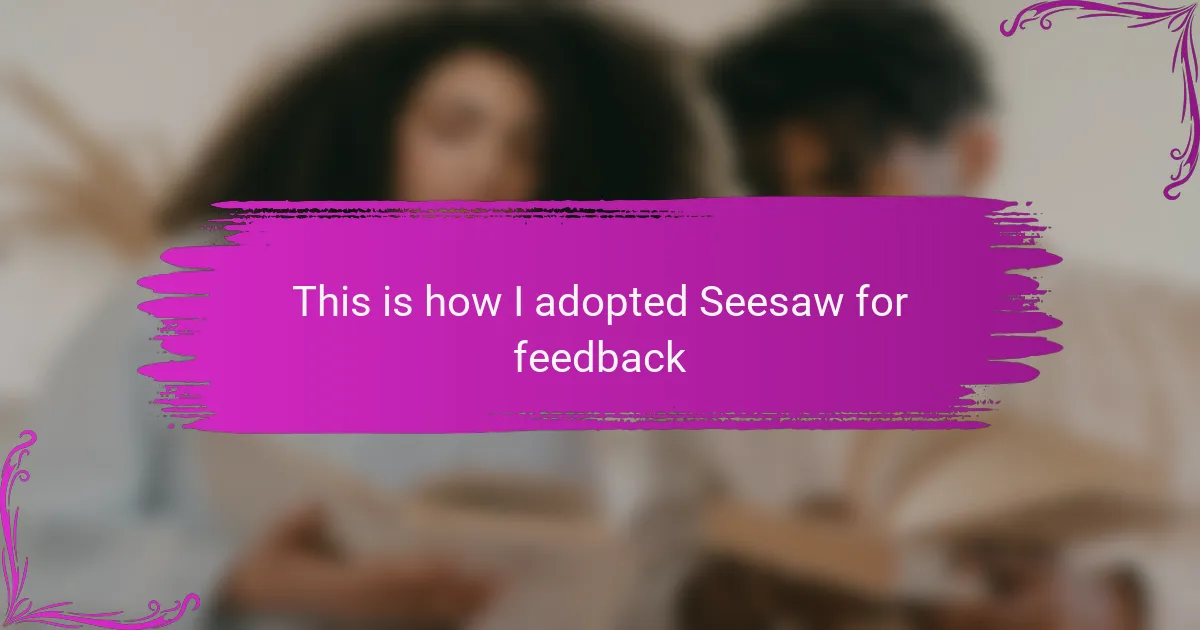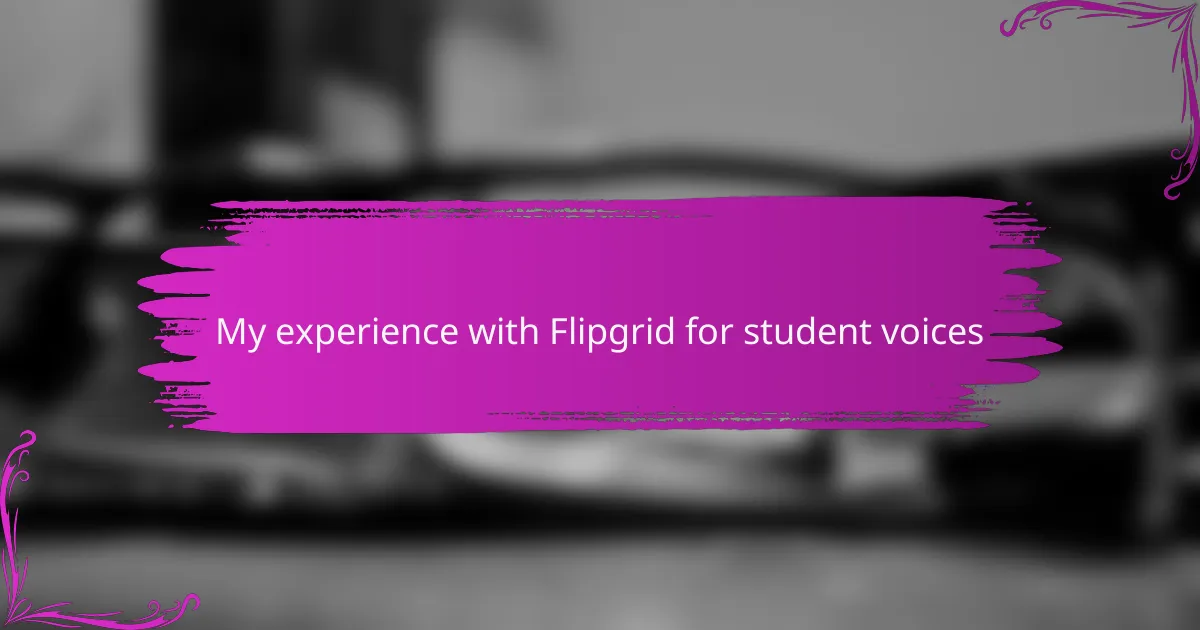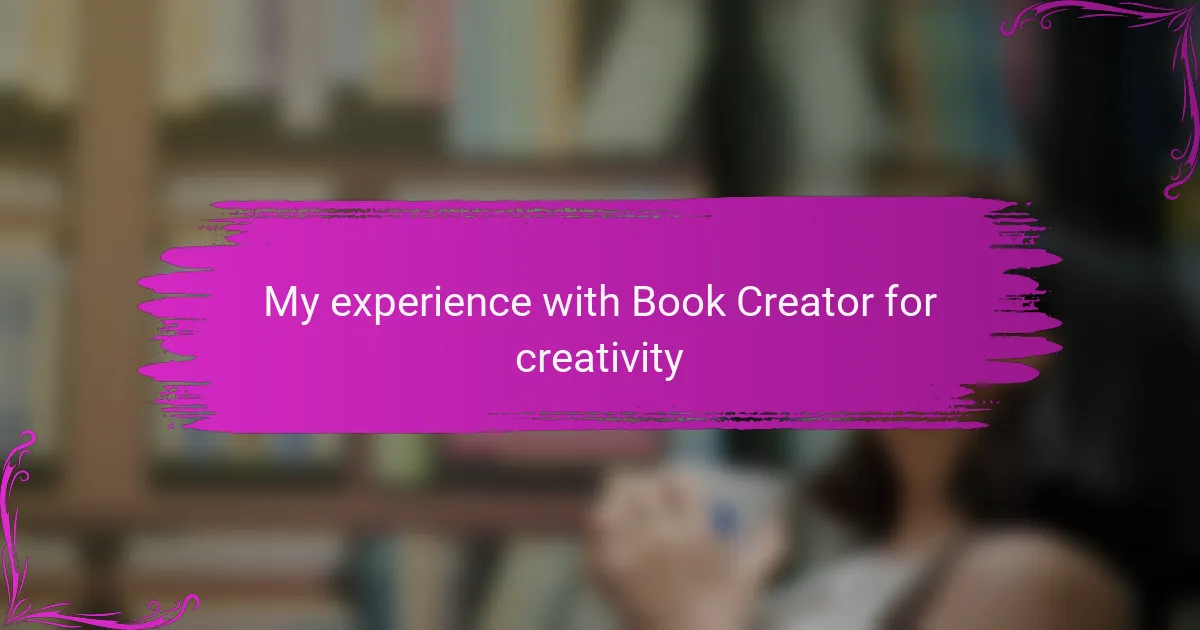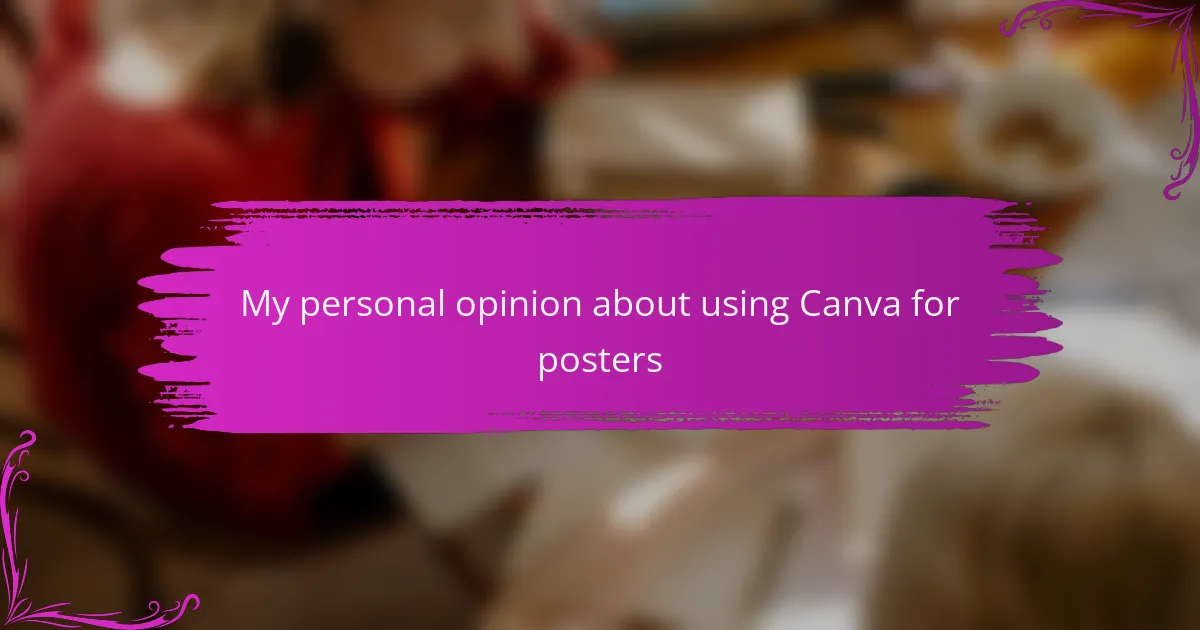Key takeaways
- Effective feedback in education should be timely, clear, constructive, engaging, and followed up to promote continuous learning.
- The Seesaw platform enhances the feedback process by providing immediate, interactive responses and involving parents in the learning journey.
- Students experience increased motivation and ownership of their learning when engaged in reflective conversations about feedback.
- Seesaw empowers students to showcase their work creatively, fostering a supportive and collaborative classroom environment.
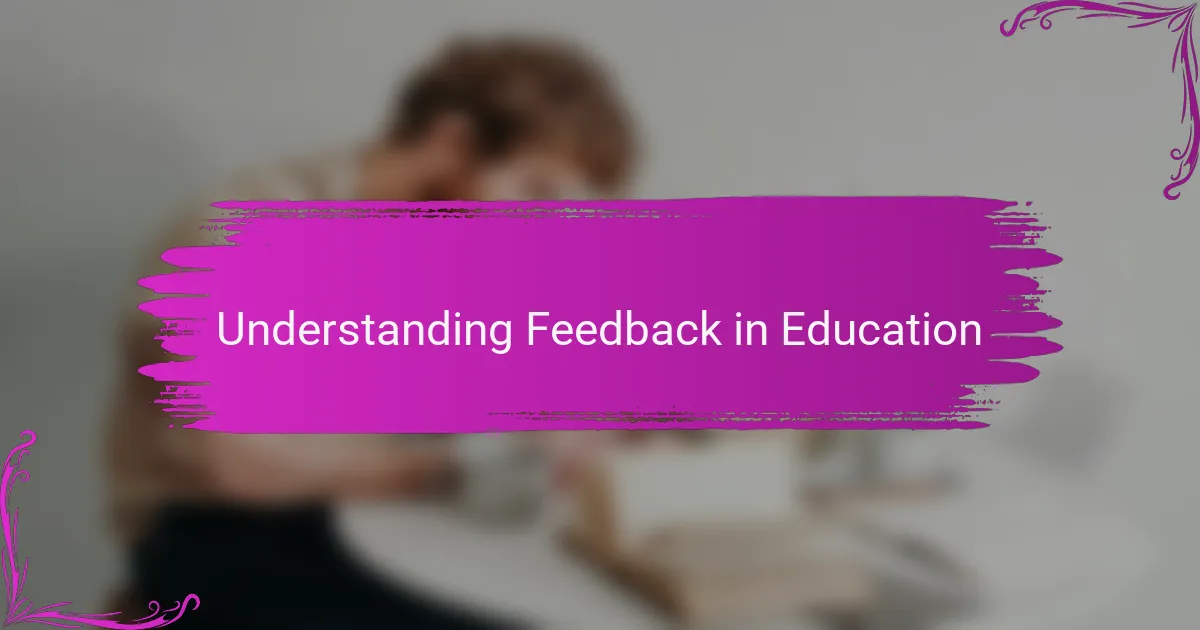
Understanding feedback in education
Feedback in education is a critical component of the learning process. I remember the first time I received constructive feedback on my writing; it was a turning point for me. It not only highlighted my strengths but also illuminated areas for improvement, which helped me grow my skills. This experience solidified my belief that feedback should be timely, specific, and actionable to truly benefit students.
There are a few key aspects that make feedback effective:
- Timeliness: Feedback should be provided soon after the task to ensure relevance.
- Clarity: Clear and specific feedback helps students understand what is expected and how to improve.
- Constructiveness: Highlighting what students did well, alongside areas to work on, inspires confidence and motivation.
- Engagement: Encouraging dialogue around feedback can deepen understanding and foster trust between students and educators.
- Follow-up: Allowing students to reflect on feedback and apply it in future assignments promotes continuous learning.
Reflecting on these points, I find myself continually inspired by the transformative power of well-delivered feedback in my own teaching experiences.
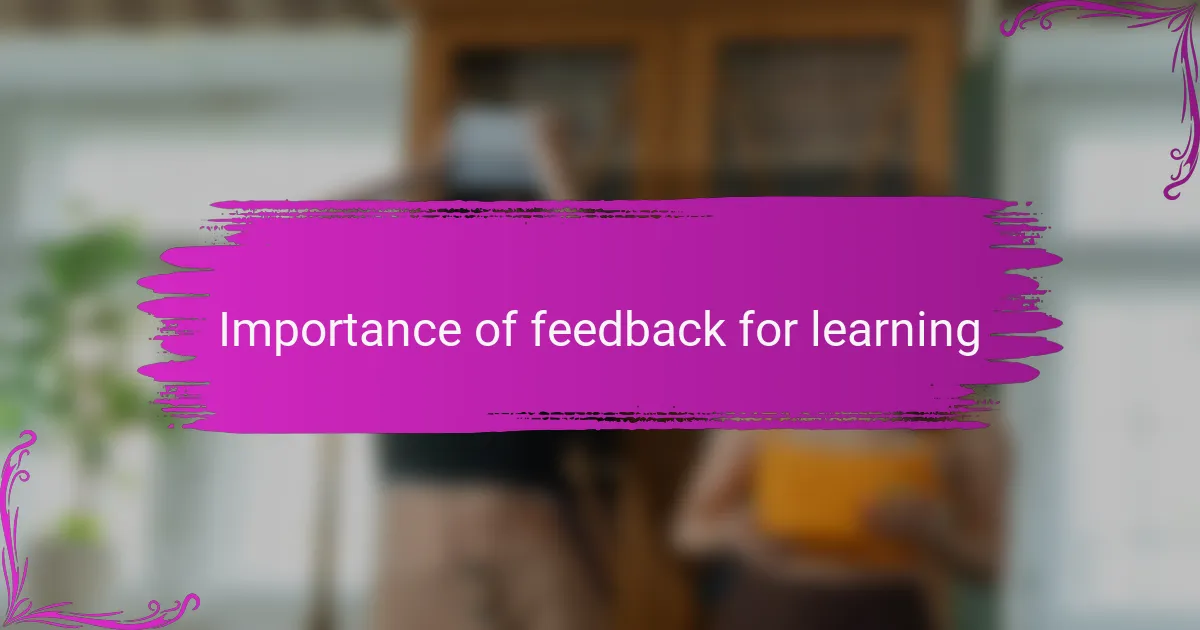
Importance of feedback for learning
Feedback serves as a mirror, reflecting a learner’s journey and illuminating the path ahead. I can recall an instance where a student received feedback that not only pointed out errors but also praised their unique voice. The shift in their demeanor was palpable; they carried the feedback with pride, eager to refine their skills rather than retreat in frustration.
What I’ve discovered is that effective feedback does more than instruct; it motivates. When I see a student light up after understanding a suggestion I’ve made, it sparks joy. It’s like planting a seed – with the right nurturing, that seed can flourish into something remarkable. Isn’t it rewarding to see students grow from one piece of feedback to the next, continually evolving?
Moreover, incorporating feedback isn’t just about correcting mistakes; it’s about fostering a growth mindset. When students engage in reflective conversations about feedback, I notice a powerful shift in their ownership of learning. They begin to see feedback as a valuable tool for their own progress rather than criticism. This sense of empowerment truly deepens my connections with them and enhances their educational experience.
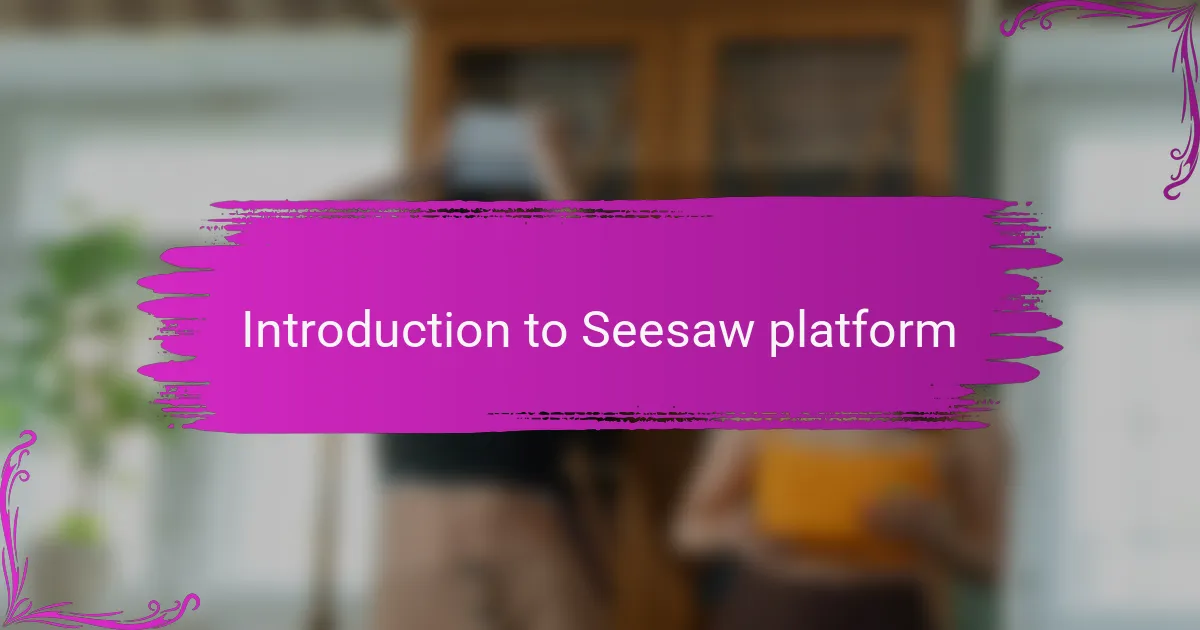
Introduction to Seesaw platform
Seesaw is a digital platform that facilitates feedback and communication between teachers, students, and parents. As someone who has embraced technology in education, I found Seesaw to be a game-changer, allowing students to express their understanding creatively. The platform’s user-friendly interface transformed how feedback is given, making it more interactive and accessible, and I’ve witnessed firsthand how it enhances student engagement.
When I first introduced Seesaw to my classroom, the excitement was palpable. Students were eager to use the tools to showcase their work, from videos to artwork. It was rewarding to see shy students open up and take pride in their contributions, demonstrating the platform’s power in fostering a supportive learning environment.
Here’s a quick comparison of Seesaw with traditional feedback methods:
| Aspect | Seesaw | Traditional Methods |
|---|---|---|
| User Engagement | High; interactive and creative | Variable; often passive |
| Feedback Speed | Immediate; real-time | Delayed; often once a week |
| Parental Involvement | Direct; parents can view and comment | Limited; often through meetings |
| Student Reflection | Encouraged; portfolio of work | Occasional; usually at report time |
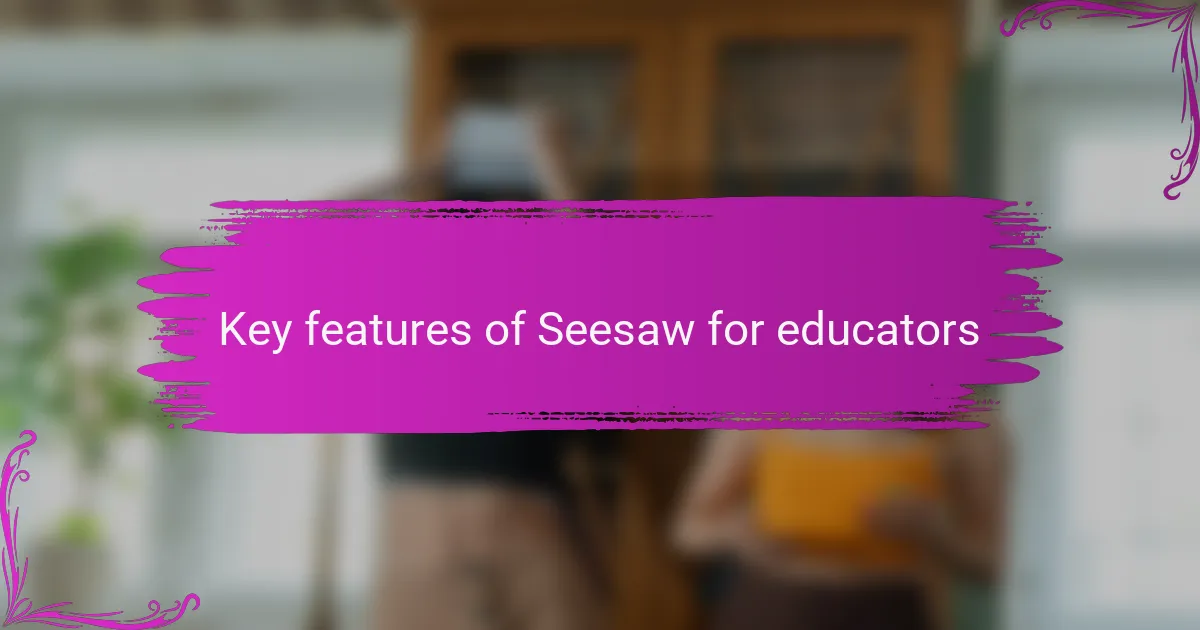
Key features of Seesaw for educators
Seesaw offers several key features that truly empower educators in their feedback process. One standout aspect is its multimedia capabilities, allowing students to present their work through videos, drawings, and audio recordings. I remember a student who, quite shy in class, used a video to share his thoughts. The pride he felt while sharing was a testament to how Seesaw encourages creativity and boosts student confidence.
Another feature that I find particularly valuable is the real-time feedback mechanism. Teachers can provide immediate comments, helping students make timely adjustments to their work. I can recall a time when I quickly responded to a student’s submission, guiding her just before a major presentation. The look of relief on her face was priceless, and it sparked a meaningful improvement in her final performance.
Lastly, the platform strengthens communication between educators and parents. Through Seesaw, parents can engage with their child’s learning journey in real time, which fosters trust and collaboration. I’ve seen parents express their joy over their child’s progress, creating a sense of community that extends beyond the classroom. Isn’t it amazing how such a platform can redefine relationships in education?
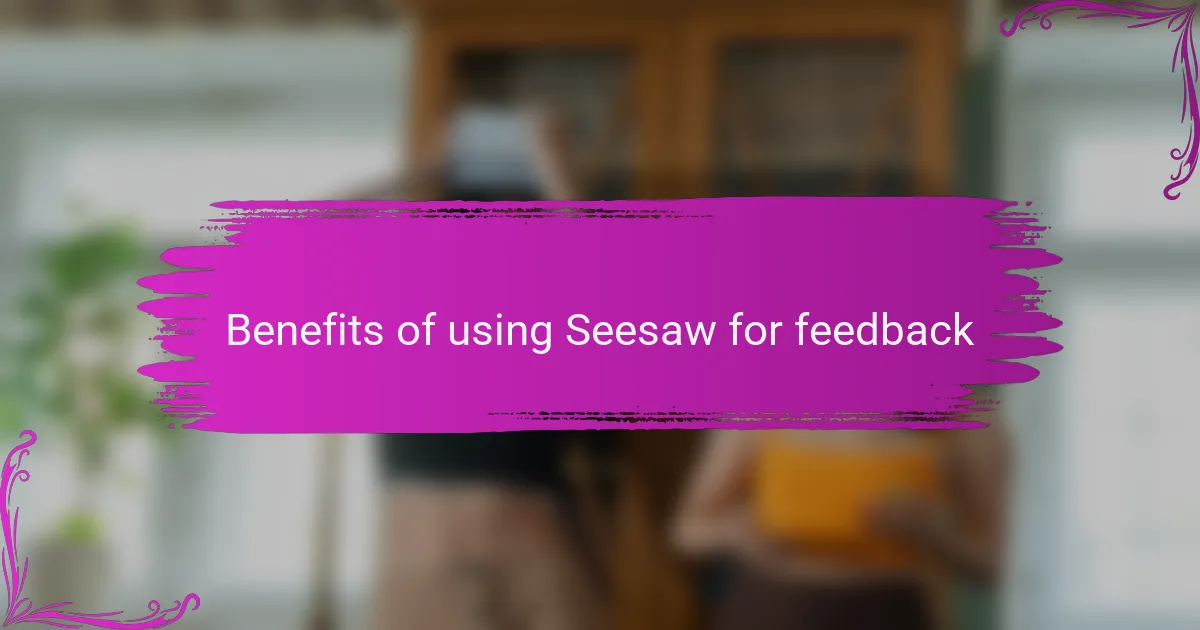
Benefits of using Seesaw for feedback
Using Seesaw for feedback in my teaching practice has really transformed the way I connect with my students. The immediacy of digital feedback has allowed me to respond to their work right when inspiration strikes, which keeps their motivation high. I’ve witnessed firsthand how this platform fosters a more engaging learning environment, where students feel recognized and encouraged to express themselves creatively.
What I particularly appreciate about Seesaw is its ability to create a portfolio for each student. They can reflect on their own work, making it a meaningful learning experience. I remember a moment when a student, who often struggled with self-doubt, proudly shared her progress with her family during parent-teacher conferences. That moment solidified my belief in the power of constructive feedback through Seesaw.
Here’s a quick comparison of traditional feedback methods versus Seesaw:
| Feature | Traditional Feedback | Seesaw |
|---|---|---|
| Timeliness | Often delayed | Instantaneous |
| Student Engagement | Limited interaction | High, interactive platform |
| Parental Involvement | Sporadic updates | Continuous access |
| Reflection Opportunities | Rare | Regular, through portfolios |
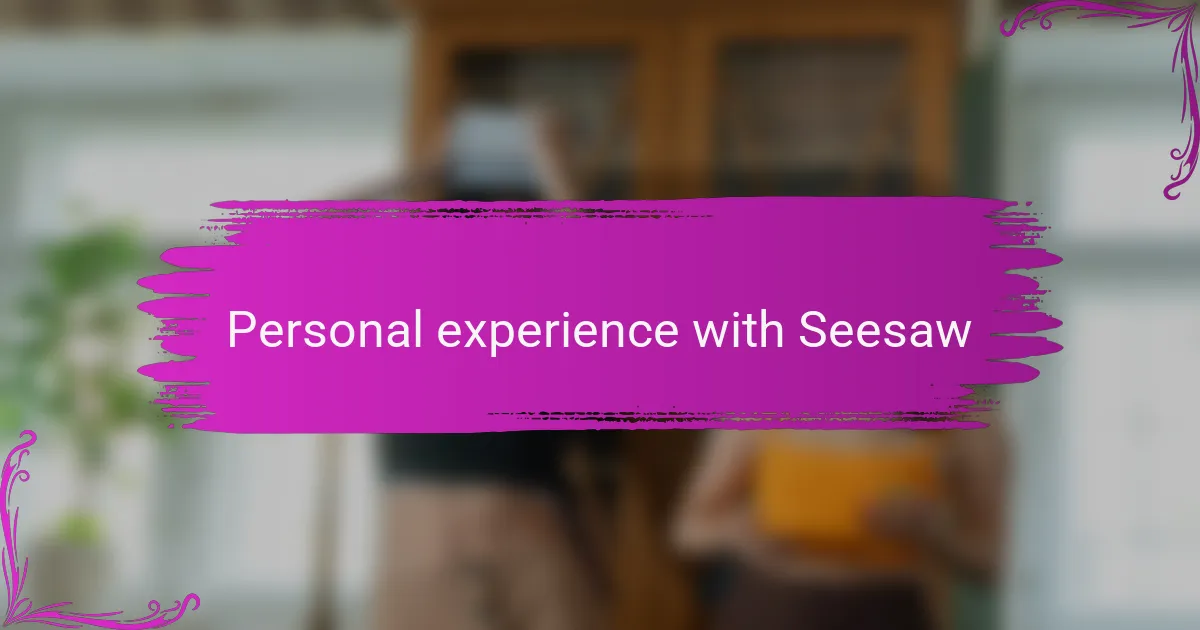
Personal experience with Seesaw
When I first discovered Seesaw, I was curious yet skeptical about how it could enhance student feedback. My experience quickly turned into a positive one; the platform allows students to showcase their work in a way that felt empowering, and I found that they were more engaged and motivated than ever before. I vividly remember a moment when a shy student proudly shared his project, and the smiles around the classroom were infectious.
As I started implementing Seesaw, I noticed a significant improvement in the quality of feedback. It became a space not only for sharing but also for meaningful conversation about learning. Students began to reflect more on their work, and I could see them taking ownership of their learning journey, which was incredibly rewarding to witness.
Here’s a simple comparison of traditional feedback methods versus using Seesaw for feedback:
| Aspect | Traditional Feedback | Seesaw Feedback |
|---|---|---|
| Engagement | More passive | Active participation |
| Feedback Timeliness | Often delayed | Immediate and ongoing |
| Student Ownership | Low | High |
